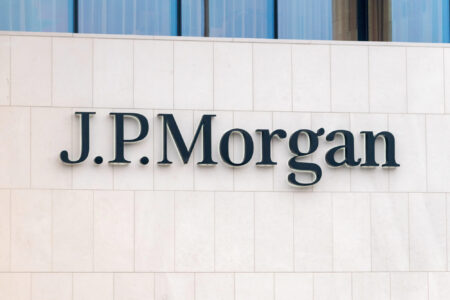What has been happening around Blockchain Technology and Cryptocurrencies this week? The most relevant local and international developments as well as appealing background reports in a pointed and compact weekly review.
Selected articles of the week:
Bitcoin has a high inverse correlation to the US Dollar Index (DXY). This makes conceptual sense, as the largest cryptocurrency has a fixed supply and is most frequently traded against the US Dollar. Consequently, the outlook for the DXY from a valuation and sentiment perspective, particularly after a period of restrictive comments from the FED, is key to short- to medium-term Bitcoin price prospects. But how do high interest rates affect the dollar, and what role do purchasing power parity and so-called carry trades play in this equation? James Butterfill explores what the potential price catalyst for Bitcoin could be from the perspective of US dollar valuation.
An analysis of Bitcoin’s inverse correlation to the U.S. dollar, as well as an outlook of interest rate developments in the United States.
Despite falling prices, the infrastructure of the crypto sector continues to thrive. This can be measured not least by what is happening in the Crypto Valley. In late summer, the business location was chosen as the European base for one of the largest crypto exchanges. A startup from the region achieved the status of Switzerland’s largest crypto unicorn, McDonalds Lugano goes Bitcoin and the largest decentralized stablecoin project MakerDAO has part of its reserves managed by a Swiss crypto bank.
The Crypto Valley is known to be one of the most “crypto-friendly” regions in the world. A review of the past two months.
The city-state of Singapore is perceived as an innovation-friendly crypto jurisdiction. The relevant regulator MAS has now adjusted its guidelines for the sector, focusing on risk disclosure requirements for crypto providers and investor protection. These adjustments were not least due to cases such as the collapse of the crypto hedge fund Three Arrows Capital (3AC). The regulatory changes for cryptocurrencies in Singapore come at a crucial time as the country seeks to position itself at the forefront among Asian jurisdictions.
The Monetary Authority of Singapore (MAS) has published two consultation papers that aim to protect retail investors from losses with crypto.
Even stock investors who have not yet dealt with the Metaverse are becoming aware of the digital world through Meta’s (formerly Facebook) billions of investments. The tech giant’s strategy is now being questioned due to meager user adoption. Meta’s considerable investment in the Metaverse has always been a risky step, and the company probably expected the initial euphoria for the Blockchain sub-sector to last a little longer. But not only Meta has to question its strategy, also the decentralized counterparts such as Axie, Sandbox, Decentraland and other Metaverse projects are confronted with the challenge of a lack of adoption. CVJ.CH content partner Kaiko Research takes a look at the Metaverse and asks whether the area is the next technological revolution or just a gimmick.
An exploration of the state of centralized and decentralized metaverses as Meta come under fire for their infatuation with the virtual world.
In addition: MakerDao is the largest decentralized stablecoin issuer, with a market capitalization of $800 million and total value locked (TVL) in the protocol of around $8 billion. Recently, the DAO decided to have some of its reserves managed by the Swiss crypto bank Sygnum. In addition, a significant portion of the USDC stablecoins held in the bonding stability module shall be invested through Coinbase Prime. It is precisely in this route of march where the crux of the project lies. The “Endgame Plan”, proposed by founder Rune Christens, inevitably leads the DeFi protocol into the dependency of centralized financial service providers. A balancing act that the crypto world will have to carry out as part of an upcoming mainstream adoption, but which also calls some critics to the fore.
Many experts are critical of MakerDAO’s current proposals, which are most likely to be adopted by the community.









